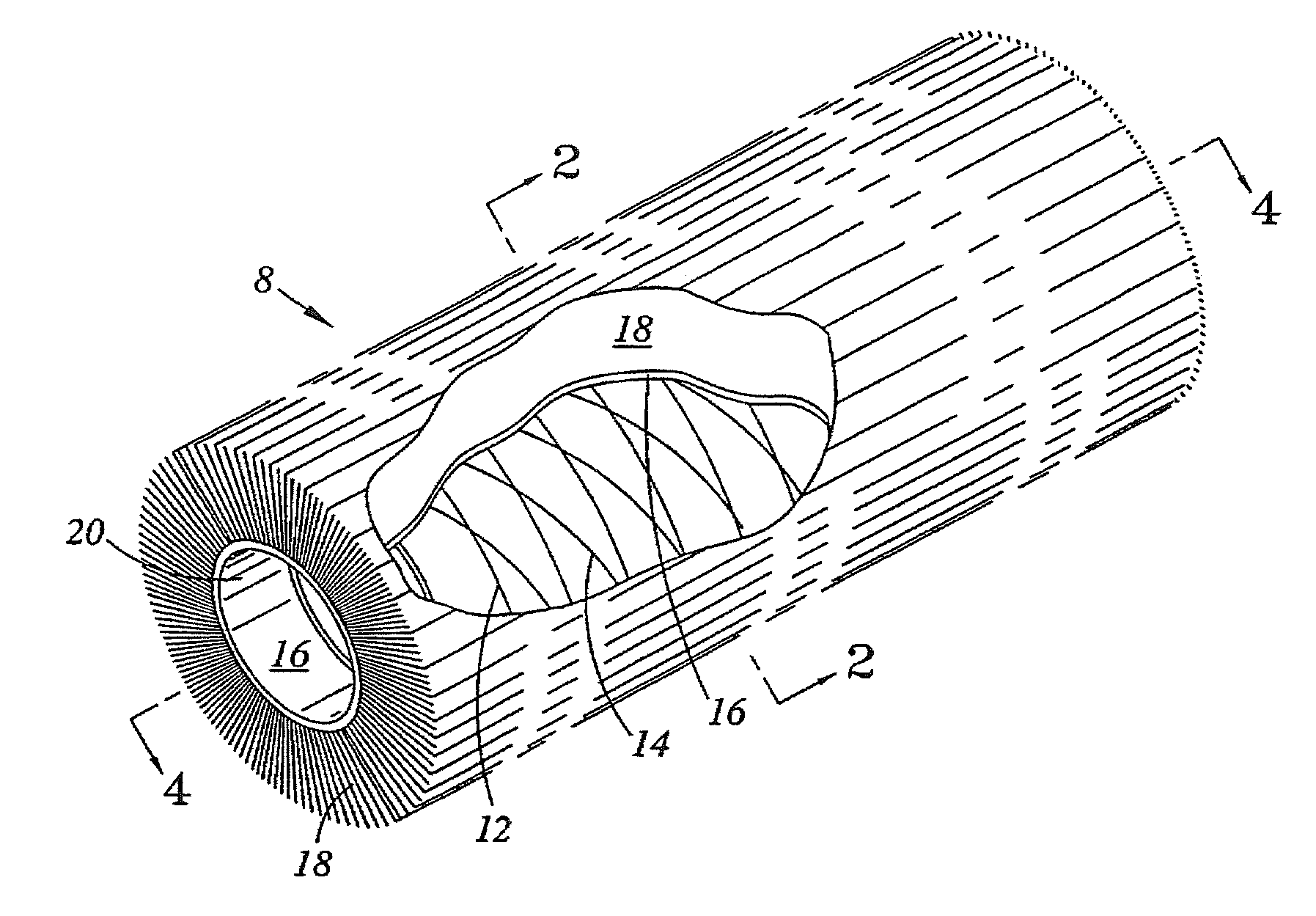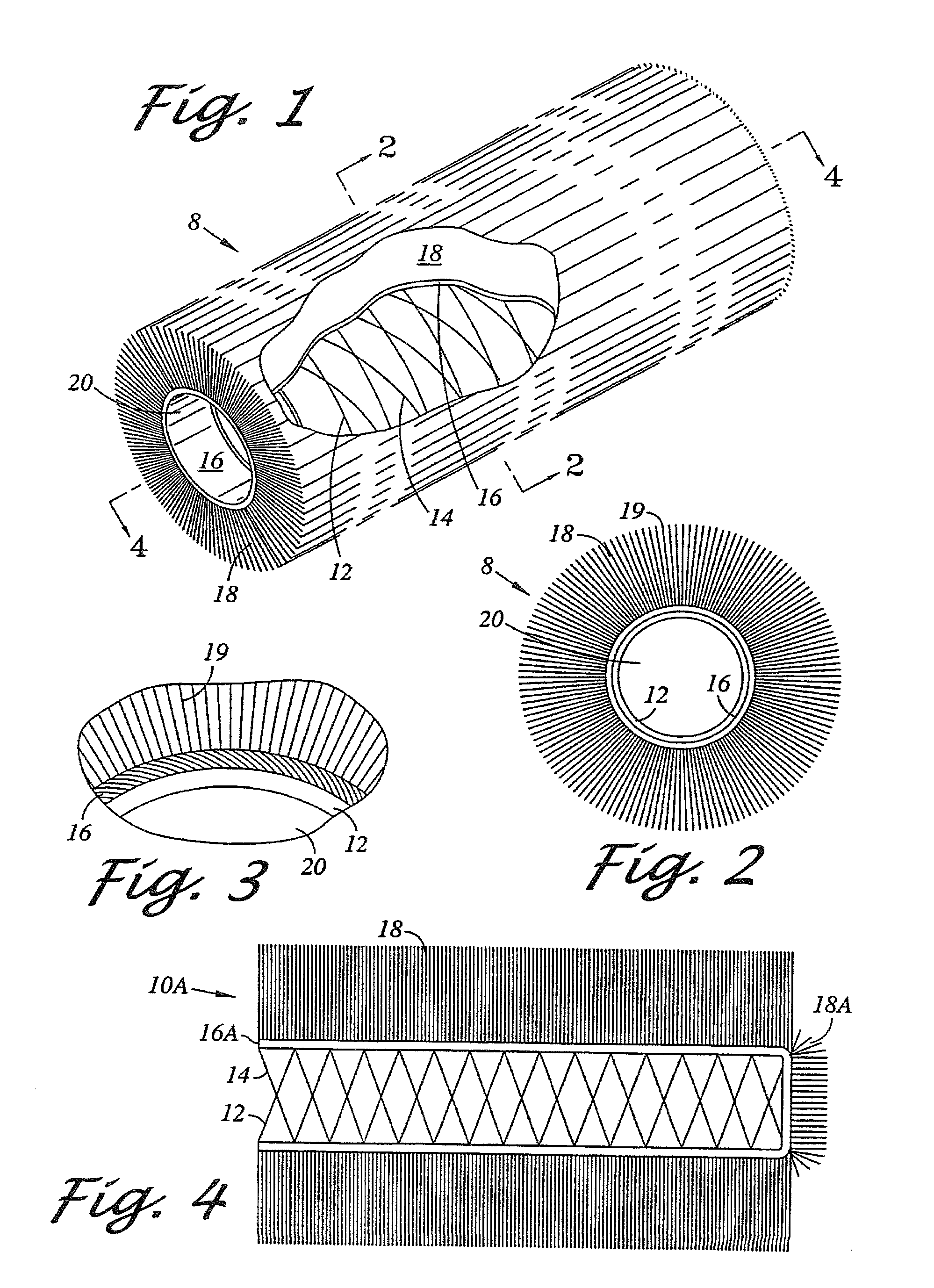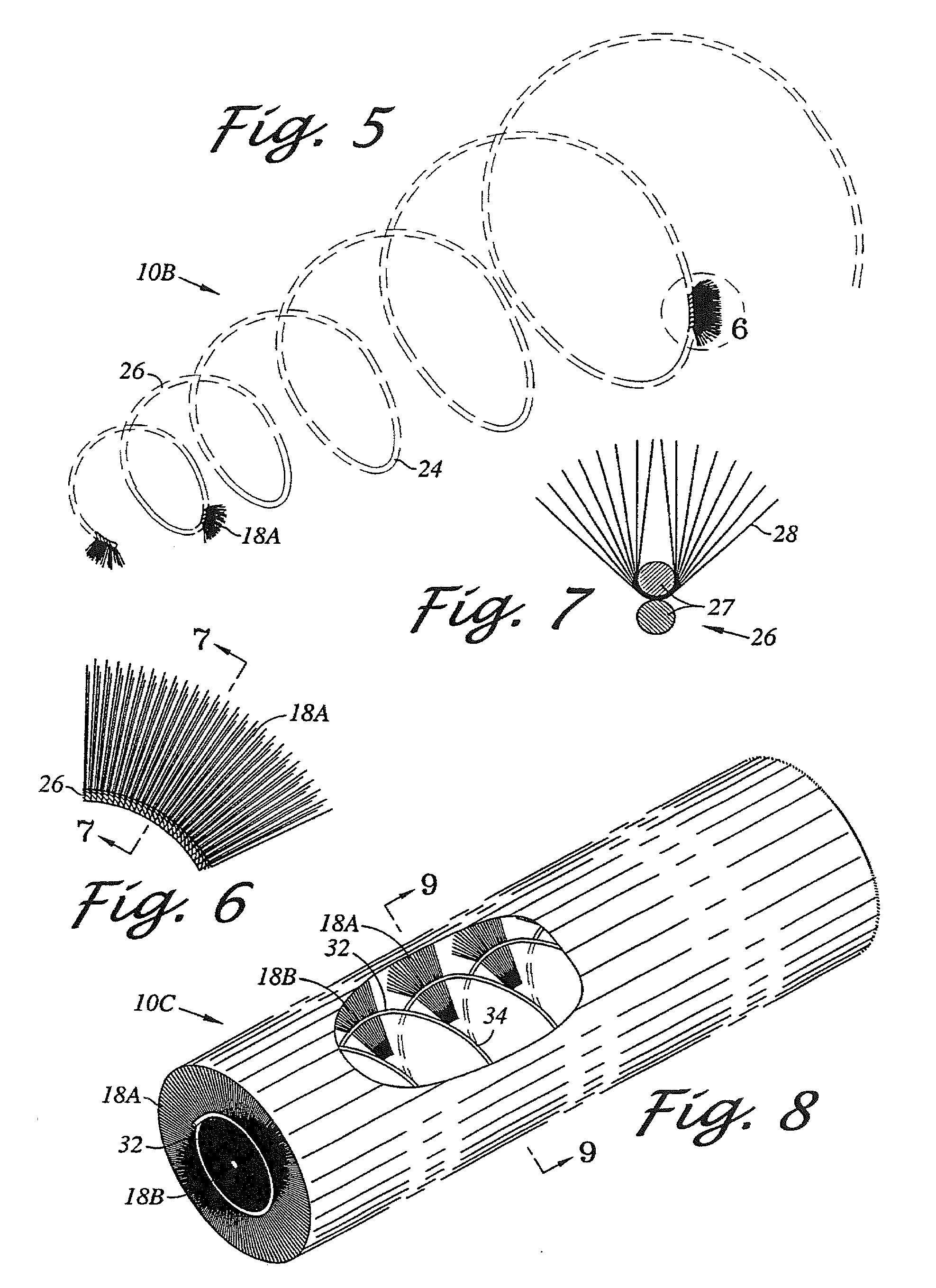Large vessel stents and occluders
a technology for occluders and stents, which is applied in the field of intervascular stents, can solve the problems of not being able to manufacture stents of all shapes and sizes and lengths, not being able to custom-make stents, and not being able to adapt to the needs of patients with stenosis, etc., and achieve the effect of prolonging the full length of the gra
- Summary
- Abstract
- Description
- Claims
- Application Information
AI Technical Summary
Benefits of technology
Problems solved by technology
Method used
Image
Examples
Embodiment Construction
[0054]Referring to FIGS. 1-3, the graft 8 comprises a stent 12 comprising wires 14 helically wound into a stent frame supporting a fabric pile backing 16. Extending circumferentially outwardly from the backing 16 is a fabric pile 18 made up of individual fibers 19. The graft has a longitudinal lumen or bore 20 extending its length to permit blood flow.
[0055]Referring to FIG. 4, the occluder 10A comprises a stent 12 having wires 14 forming a stent frame which supports a sock fabric pile backing 16A. A fabric pile 18 made up of individual threads extends circumferentially from the longitudinal portion of the fabric pile backing and fabric pile 18A made up of fiber threads extending from the end of the fabric pile backing sock.
[0056]Referring to FIGS. 5-7, the conical shaped occluder 10B comprises a conical shaped stent 24 comprising at least one helically wound double wire strand 26. The wire strand 26 comprises of at least two wires 27 which are twisted (not shown). Fabric thread 28 ...
PUM
 Login to View More
Login to View More Abstract
Description
Claims
Application Information
 Login to View More
Login to View More - R&D
- Intellectual Property
- Life Sciences
- Materials
- Tech Scout
- Unparalleled Data Quality
- Higher Quality Content
- 60% Fewer Hallucinations
Browse by: Latest US Patents, China's latest patents, Technical Efficacy Thesaurus, Application Domain, Technology Topic, Popular Technical Reports.
© 2025 PatSnap. All rights reserved.Legal|Privacy policy|Modern Slavery Act Transparency Statement|Sitemap|About US| Contact US: help@patsnap.com



